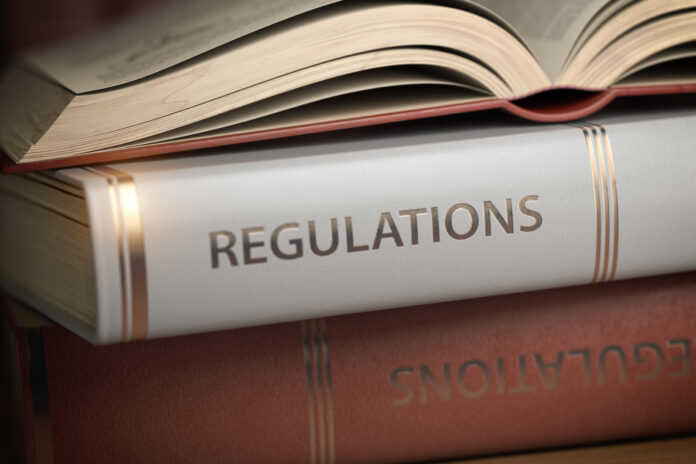
Today, the Biden Administration released their Spring 2021 Unified Agenda, reversing from the Trump Administration’s deregulatory push and signaling new action on wages, climate, and the economy.
The little-known but powerful White House Office of Information and Regulatory Affairs (OIRA) publishes the Unified Agenda in the spring and fall each year. The Agenda discloses to the public and policymakers each executive branch agencies’ plans for regulatory actions over the next 12 months and beyond. Most Unified Agenda items list why the government is considering an action plus a draft timeline for proposing and finalizing new regulations. However, timelines given in the Unified Agenda are not binding, and can shift.
The Trump Administration famously focused on deregulation, rolling back rules for climate and the environment, labor and workplace, and for health insurers. The Trump era’s Unified Agendas even included a list of “deregulatory actions,” which the Biden team has eliminated totally. Elsewhere the Biden agenda announces plans to boost wages for tipped and construction workers, provide relief for student loan borrowers. With Democrats only barely holding the majority in both chambers of Congress, the regulatory process can be another avenue for the Biden Administration to enact promised changes. The Unified Agenda, however, also shows how slowly regulatory wheels turn: timeline for major actions are measured in years, not weeks or months, and many entries note that regulatory actions and reviews stem from decades’ worth of legislation, negotiated rulemaking, and legal action.
Climate, Environment, and Energy
The Biden Administration have long promised sweeping action on climate change and environmental justice. The Unified Agenda includes several priorities to advance those priorities.
The Department of Transportation (DOT) has plans to enhance pipeline safety, including through new requirements to detect and repair leaks. The Administration also plans to advance the light-duty vehicle greenhouse gas emissions standard by July, while a longer-term disclosure shows the Administration is also examining emission standards for heavy duty vehicles.
Also on energy, the Biden Administration plans to update jurisdictions for federal agencies working with offshore wind energy as the Biden Administration invests in an industry that President Trump often disparaged. The Biden Administration also plans to revise safety standards for offshore oil and gas drilling.
The Environmental Protection Agency (EPA) agenda shows plans to impose regulations to phase down hydrofluorocarbons, or “super polluting” greenhouse gases, while multiple agencies, are planning to write stricter standards for natural resources development on public lands to account for factors like climate impact. For example, the Biden Administration’s Forest Service plans to reverse President Trump’s Alaskan opening of the Tongass National Forest, the world’s largest intact temperate rainforest, to road building, logging, mining, and other development.
The Unified Agenda’s Long Term list (actions planned for action more than a year away) includes even more ambitious actions. For example, the Biden EPA says it is moving in the coming five years to regulate PFAS and PFOS, a group of thousands of chemicals widely used in fireproof and waterproof consumer products. The EPA could set limits for PFAS chemicals in drinking water or even designate them as hazardous — this move could have implications for manufacturers, waste management and wastewater firms, and consumers who use these products. The EPA had previously announced plans to regulate levels of 29 PFOS chemicals in drinking water for the first time in history.
Economy
The agenda also includes a number of regulations aimed at the workings of the economy. Importantly for employers, the Department of Labor (DOL) will aim to update wage rules for tip-earning and construction workers. The Occupational Safety and Hazard Administration (OSHA) is also considering rules requiring employers to protect workers from heat-related illnesses, a step the Obama Administration declined to take despite pressure from organized labor groups. OSHA is similarly planning action on a long-delayed airborne infectious disease rule, which pre-dates and is not specific to the COVID pandemic, by the end of the year. The proposed rule focuses on the healthcare industry and employers’ obligations to shield employees from a range of diseases.
The National Labor Relations Board (NLRB) would withdraw Trump-era rules on unions’ access to employer-owned property and another on union organizers’ access to voter information lists, while proposing a new rule requiring businesses and unions to file more disclosure forms when a case comes before the board.
Even more notable proposed rules for employers fall on the immigration side: The Biden Administration will make even more changes to the Trump Administration’s revisions to the high-skilled H-1B program popular in the tech industry. The White House also signaled lasting support for the Deferred Action for Childhood Arrivals (DACA) program, which provides deportation protection and work permits to about 700,000 people.
Next steps
Most proposed regulations go through a long process of public comment and negotiated rulemaking before taking effect, while outside groups can file comments and legal action to either slow or try to speed up certain regulations. Michael Best Strategies’ regulatory practice is available to help our clients sort through the Unified Agenda and to develop strategies to further our clients’ priorities.





